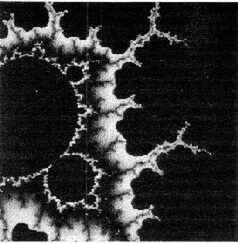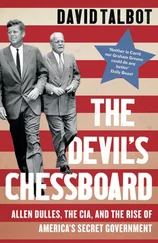Strictly speaking, however, World War I was still predominantly a European war, not a global one. But its self-destructive character marked the beginning of the end of Europe’s political, economic, and cultural preponderance over the rest of the world. In the course of the war, no single European power was able to prevail decisively—and the war’s outcome was heavily influenced by the entrance into the conflict of the rising non-European power, America. Thereafter, Europe would become increasingly the object, rather than the subject, of global power politics.
However, this brief burst of American global leadership did not produce a continuing American engagement in world affairs. Instead, America quickly retreated into a self-gratifying combination of isolationism and idealism. Although by the mid-twenties and early thirties totalitarianism was gathering strength on the European continent, American power—by then including a powerful two-ocean fleet that clearly outmatched the British navy—remained disengaged. Americans preferred to be bystanders to global politics.
Consistent with that predisposition was the American concept of security, based on a view of America as a continental island. American strategy focused on sheltering its shores and was thus narrowly national in scope, with little thought given to international or global considerations. The critical international players were still the European powers and, increasingly, Japan.
The European era in world politics came to a final end in the course of World War II, the first truly global war. Fought on three continents simultaneously, with the Atlantic and the Pacific Oceans also heavily contested, its global dimension was symbolically demonstrated when British and Japanese soldiers—representing, respectively, a remote Western European island and a similarly remote East Asian island—collided thousands of miles from their homes on the Indian-Burmese frontier. Europe and Asia had become a single battlefield.
Had the war’s outcome been a clear-cut victory for Nazi Germany, a single European power might then have emerged as globally preponderant. (Japan’s victory in the Pacific would have gained for that nation the dominant Far Eastern role, but in all probability, Japan would still have remained only a regional hegemon.) Instead, Germany’s defeat was sealed largely by the two extra-European victors, the United States and the Soviet Union, which became the successors to Europe’s unfulfilled quest for global supremacy.
The next fifty years were dominated by the bipolar American-Soviet contest for global supremacy. In some respects, the contest between the United States and the Soviet Union represented the fulfillment of the geopoliticians’ fondest theories: it pitted the world’s leading maritime power, dominant over both the Atlantic and the Pacific Oceans, against the world’s leading land power, paramount on the Eurasian heartland (with the Sino-Soviet bloc encompassing a space remarkably reminiscent of the scope of the Mongol Empire). The geopolitical dimension could not have been clearer: North America versus Eurasia, with the world at stake. The winner would truly dominate the globe. There was no one else to stand in the way, once victory was finally grasped.
Each rival projected worldwide an ideological appeal that was infused with historical optimism, that justified for each the necessary exertions while reinforcing its conviction in inevitable victory. Each rival was clearly dominant within its own space—unlike the imperial European aspirants to global hegemony, none of which ever quite succeeded in asserting decisive preponderance within Europe itself. And each used its ideology to reinforce its hold over its respective vassals and tributaries, in a manner somewhat reminiscent of the age of religious warfare.
The combination of global geopolitical scope and the proclaimed universality of the competing dogmas gave the contest unprecedented intensity. But an additional factor—also imbued with global implications—made the contest truly unique. The advent of nuclear weapons meant that a head-on war, of a classical type, between the two principal contestants would not only spell their mutual destruction but could unleash lethal consequences for a significant portion of humanity. The intensity of the conflict was thus simultaneously subjected to extraordinary self-restraint on the part of both rivals.
In the geopolitical realm, the conflict was waged largely on the peripheries of Eurasia itself. The Sino-Soviet bloc dominated most of Eurasia but did not control its peripheries. North America succeeded in entrenching itself on both the extreme western and extreme eastern shores of the great Eurasian continent. The defense of these continental bridgeheads (epitomized on the western “front” by the Berlin blockade and on the eastern by the Korean War) was thus the first strategic test of what came to be known as the Cold War.
In the Cold War’s final phase, a third defensive “front”—the southern—appeared on Eurasia’s map (see map above). The Soviet invasion of Afghanistan precipitated a two-pronged American response: direct U.S. assistance to the native resistance in Afghanistan in order to bog down the Soviet army; and a large-scale buildup of the U.S. military presence in the Persian Gulf as a deterrent to any further southward projection of Soviet political or military power. The United States committed itself to the defense of the Persian Gulf region, on a par with its western and eastern Eurasian security interests.
The successful containment by North America of the Eurasian bloc’s efforts to gain effective sway over all of Eurasia—with both sides deterred until the very end from a direct military collision for fear of a nuclear war—meant that the outcome of the contest was eventually decided by nonmilitary means. Political vitality, ideological flexibility, economic dynamism, and cultural appeal became the decisive dimensions.
The American-led coalition retained its unity, whereas the Sino-Soviet bloc split within less than two decades. In part, this was due to the democratic coalition’s greater flexibility, in contrast to the hierarchical and dogmatic—but also brittle—character of the Communist camp. The former involved shared values, but without a formal doctrinal format. The latter emphasized dogmatic orthodoxy, with only one valid interpretative center. America’s principal vassals were also significantly weaker than America, whereas the Soviet Union could not indefinitely treat China as a subordinate. The outcome was also due to the fact that the American side proved to be economically and technologically much more dynamic, whereas the Soviet Union gradually stagnated and could not effectively compete either in economic growth or in military technology. Economic decay in turn fostered ideological demoralization.
In fact, Soviet military power—and the fear it inspired among westerners—for a long time obscured the essential asymmetry between the two contestants. America was simply much richer, technologically much more advanced, militarily more resilient and innovative, socially more creative and appealing. Ideological constraints also sapped the creative potential of the Soviet Union, making its system increasingly rigid and its economy increasingly wasteful and technologically less competitive. As long as a mutually destructive war did not break out, in a protracted competition the scales had to tip eventually in America’s favor.
The final outcome was also significantly influenced by cultural considerations. The American-led coalition, by and large, accepted as positive many attributes of America’s political and social culture. America’s two most important allies on the western and eastern peripheries of the Eurasian continent, Germany and Japan, both recovered their economic health in the context of almost unbridled admiration for all things American. America was widely perceived as representing the future, as a society worthy of admiration and deserving of emulation.
Читать дальше












